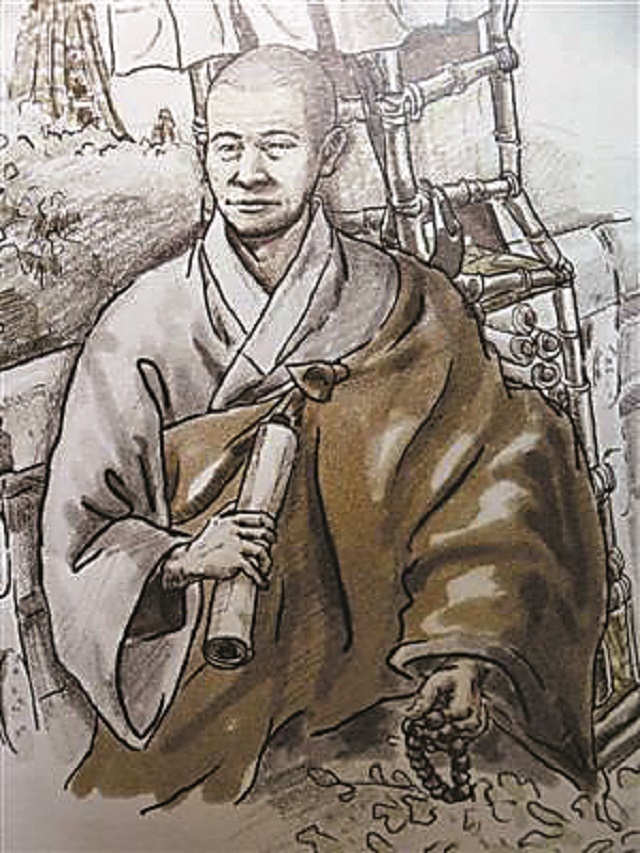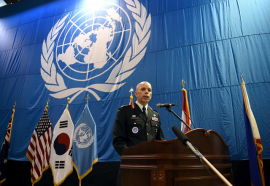
This was urged by Dr So Gilsu, a South Korean scholar who heads the Pure Land Buddhist Institute while speaking a seminar organised by the South Korean Embassy in the federal capital last week.
Dr Gilsu is visiting archaeological sites in Pakistan in a bid to trace the footsteps of the Korean monk Hyecho, who had visited areas in modern-day Pakistan and India during the Gandhara civilization and later wrote about it in his ‘Memoir of the Pilgrimage to the Five Kingdoms of Tentouk (Sindhu)’.
Heatwaves imminent if tree cover not increased
“Hyecho set out for Tentouk (Indu-ia) in 723 AD to acquaint himself with the language and Dharma of the land of Buddha,” said Dr Gilsu.
Tracing the ancient link between Gandhara and Korea, Dr Gilsu said that the first Buddhist missionary from Gandhara who traveled to Korea was Malananda in the fourth century.
“Malananda was a Buddhist monk from Gandhara — modern-day Pakistan, who brought Buddhism to southern Korea in the fourth century. He came to Baekje from Jin China in 384 AD,” the South Korean scholar explained.
Bop-song-po (The Habour of Holy Dharma), located in the southwest of Korea, thus became the first hub for Buddhism in the Korean peninsula through Malananda, he added.
Dr Gilsu elaborated that little to nothing is known about the route which Malananda took.
However, Hyecho wrote detailed memoirs of his journey in Chinese called Wang o-chonchukguk–jon. This translates to as ‘Memoir of the Pilgrimage to the Five Kingdoms of Tentouk (indu-ia)’.
Parts of Hyecho’s book were discovered by Paul Pelliot, a French sinologist, in the 20th century. Pelliot collected Hyecho’s book and a host of other manuscripts in different languages which now lie in the National Library in Paris.
In the book, the region was named Tentouk, which Dr Gilsu says means the ‘Sindhu River’.
He elaborated that there were five kingdoms of Tentouk: north, west, central, south, and east Tentouk. Dr Gilsu said that North and West Tentouk are mainly the areas which comprise Pakistan today, while central and south Tentouk lie in modern-day India and East Tentouk is Bangladesh.
Hyecho visited West Tentouk, which is the Sindh province today. There is also mention of Kashmir, Skardu, Gilgit, Swat, Chitral and Gandhara in Hyecho’s book.
Dr Gilsu says ‘Indus’ and ‘India’ are the names given by Europeans while the root for both these names is Indu or the Indu River.
After tracing Hyecho’s footsteps in Pakistan, Dr Gilsu hopes to continue his research in India and then on to Bangladesh.
Pompeo says US, North Korea continue to make progress on nuclear issue
“It took me a month to travel by road from China to Islamabad. But 1,300 years ago, it had taken Hyecho an entire year to travel from Gandhara to China where he lived and died,” Dr Gilsu said.
“You can call me the modern Hyecho and I come with the message of peace and harmony in the whole of Indu,” he enthused.
“Since the partition of British India in 1947 and creation of modern states of India and Pakistan, the two countries have been involved in four wars. The wars and conflict have ended with defeat or disaster for both countries,” the scholar said, adding, “I know the fact well since I myself experienced the same history in my country, Korea.”
Published in The Express Tribune, October 8th, 2018.



















1713862885-0/Untitled-design-(11)1713862885-0-270x192.webp)




















COMMENTS (1)
Comments are moderated and generally will be posted if they are on-topic and not abusive.
For more information, please see our Comments FAQ